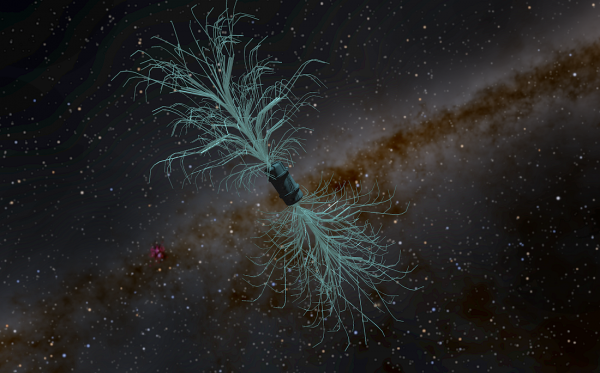BY LETTER
Crystal Trees
 Image from Steve Bowers | |
| Light-gathering structures with a branching, tree-like form. | |
Although it can be used in the form of simple hull plating it is more mass efficient to employ biomimicry to form it into a drytech analog of a Dyson Tree; with photons collected omnidirectionally by multiple surfaces (leaves), combined within the branching system, and guided down the trunk to a root system which may be connected to other trees to gather light over an even wider area. These roots may then direct the light to one or more locations deep within the habitat. A Crystal Tree is preferred over a Dyson Tree in deep space use for three reasons: First, the metamaterial is inert and does not have the metabolic overhead of a living Dyson Tree. Thus all of the starlight collected can be used for habitat lighting.
Second, as a living structure Dyson Trees are limited to how large they can grow. Even in the low gravity field of a comet, Dyson Trees can only grow so big (about 100 km across). This is due to the low gravity field itself rather than the lack of resources in a tree's core. Like most plants the growth zone of a Dyson Tree is in the tips of its branches. As the gravity field of the core falls off to the inverse square of the distance from it a point is quickly reached where the tree's geotropic sense can no longer tell up from down and it simply stops growing outward. However, a Crystal Tree is a 'built' structure so its canopy of leaves can be 'placed' as far out as needed to provide the desired collection area. This is especially true for a habitat with as little gravity as a comet.
And third, advanced versions of the Crystal Tree tech uses non-linear optics to sum the frequencies of the photons; tailoring the light by combining and/or splitting the energy of the photons to produce more of the most desired wavelengths. Thus even non-visible electromagnetic energy like microwaves and ultraviolet can be collected and used for visible wavelength illumination.
Related Articles
Appears in Topics
Development Notes
Text by AI Vin
Initially published on 08 May 2019.
Initially published on 08 May 2019.






